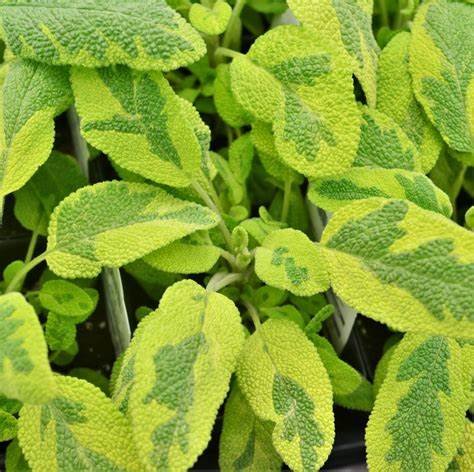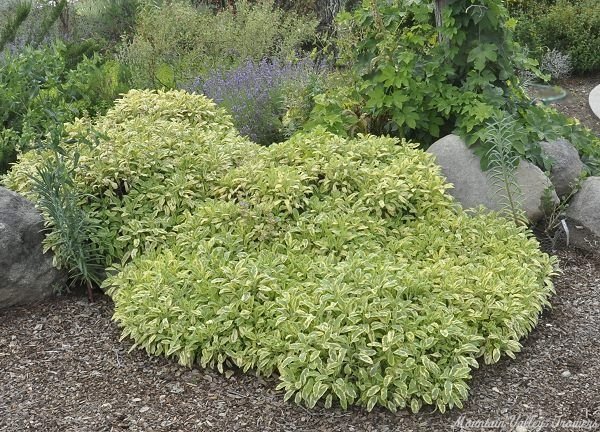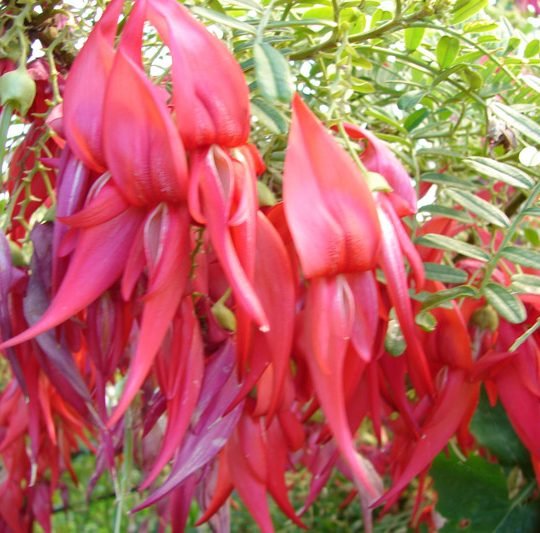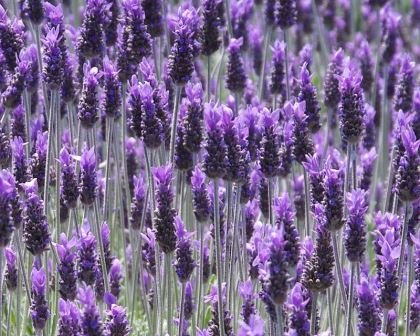 Image 1 of 2
Image 1 of 2

 Image 2 of 2
Image 2 of 2



Sage Golden Variegated
Golden sage, also known as variegated sage, is a unique and visually appealing variety of the common garden sage. While both golden sage and regular sage share similar aromatic and flavor properties, the main difference lies in their appearance. The leaves of golden sage are beautifully variegated, featuring a contrast of green and yellow colors, whereas the leaves of regular sage are typically grayish in color.
One of the first things you’ll notice about golden sage is its striking foliage. The variegated leaves add a touch of vibrancy and interest to any garden or landscape. The green and yellow hues create a lovely contrast that can be quite eye-catching. This makes golden sage a popular choice for those looking to add visual appeal to their herb garden or decorative plantings.
In terms of taste and aroma, both golden sage and regular sage possess similar characteristics. They both have a strong, earthy scent and a slightly bitter, savory flavor. Sage is renowned for its culinary uses, particularly in dishes like stuffing, roasted meats, and sauces. It adds a distinctive flavor that can enhance the overall taste of a dish. Golden sage can be used in the same way as regular sage, providing the same aromatic and flavor benefits.
Golden sage, also known as variegated sage, is a unique and visually appealing variety of the common garden sage. While both golden sage and regular sage share similar aromatic and flavor properties, the main difference lies in their appearance. The leaves of golden sage are beautifully variegated, featuring a contrast of green and yellow colors, whereas the leaves of regular sage are typically grayish in color.
One of the first things you’ll notice about golden sage is its striking foliage. The variegated leaves add a touch of vibrancy and interest to any garden or landscape. The green and yellow hues create a lovely contrast that can be quite eye-catching. This makes golden sage a popular choice for those looking to add visual appeal to their herb garden or decorative plantings.
In terms of taste and aroma, both golden sage and regular sage possess similar characteristics. They both have a strong, earthy scent and a slightly bitter, savory flavor. Sage is renowned for its culinary uses, particularly in dishes like stuffing, roasted meats, and sauces. It adds a distinctive flavor that can enhance the overall taste of a dish. Golden sage can be used in the same way as regular sage, providing the same aromatic and flavor benefits.
Golden sage, also known as variegated sage, is a unique and visually appealing variety of the common garden sage. While both golden sage and regular sage share similar aromatic and flavor properties, the main difference lies in their appearance. The leaves of golden sage are beautifully variegated, featuring a contrast of green and yellow colors, whereas the leaves of regular sage are typically grayish in color.
One of the first things you’ll notice about golden sage is its striking foliage. The variegated leaves add a touch of vibrancy and interest to any garden or landscape. The green and yellow hues create a lovely contrast that can be quite eye-catching. This makes golden sage a popular choice for those looking to add visual appeal to their herb garden or decorative plantings.
In terms of taste and aroma, both golden sage and regular sage possess similar characteristics. They both have a strong, earthy scent and a slightly bitter, savory flavor. Sage is renowned for its culinary uses, particularly in dishes like stuffing, roasted meats, and sauces. It adds a distinctive flavor that can enhance the overall taste of a dish. Golden sage can be used in the same way as regular sage, providing the same aromatic and flavor benefits.





